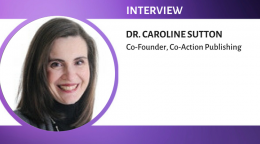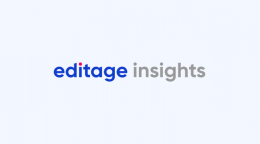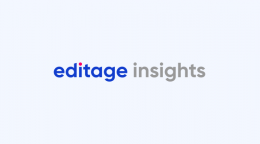Plan S: An update on what’s happening and what’s in store

The COVID-19 pandemic is testament enough to the importance of universal and immediate accessibility to published research. According to one estimate, close to 72% of the world’s research is behind a paywall.1 However, the shift toward open access (OA) is becoming increasingly prominent, and Plan S is part of the OA movement.
What is Plan S?
Plan S is an OA publishing initiative launched in 2018 by a consortium of international funders and charitable foundations (“cOAlition S”). It aims to fast-track the move to a scholarly publishing system wherein there is immediate and free online access to academic publications. Plan S implementation guidelines require that by 2021, researchers funded by public grants publish their work in open repositories or journals that are available to all. The 10 Plan S principles can be summarized as follows: scholarly publications should be released OA instantly upon publication (no paywall or embargo); the preferred Creative Commons license is CC-BY, and the author or their institution retains copyright; and subscription and hybrid journals should commit to transition to full OA.
Plan S: A timeline of developments
Let’s look at the developments from conception to implementation and beyond.
2018
- September 2018: Plan S is launched, and its implementation is planned for January 2020.
- November 2018: Plan S implementation guidance is released, with three pathways for compliance, namely, publication in OA journals or platforms, deposition of versions of record (VoR) or author accepted manuscript (AAM) in OA repositories without embargo, and publication in hybrid journals only under transformative agreements.
2019
- June 2019: cOAlition S releases revised implementation guidance on Plan S, with a revised commencement date of January 1, 2021.
2020
- July 2020: cOAlition S develops Rights Retention Strategy (RRS) to safeguard researchers’ intellectual ownership rights.
- November 2020: Springer Nature adopts Plan S’s Transformative Journals framework.
- November 2020: Journal Checker Tool (JCT), a web-based tool to advise researchers on identifying Plan S–compliant publishing options, is released.
2021 onwards
- January 2021: Science publisher AAAS announces support of the OA policy in line with Plan S’s green OA rules. Further, 160 Elsevier journals become Plan S–aligned Transformative Journals.
- February 2021: Dozens of publishers, including Elsevier, Wiley, and Springer Nature, announce their opposition to the RRS
- May 2022: Journal Comparison Service (JCS), a free service to elucidate publishing fees and services, is released.
By July 2022, only publishers meeting Plan S price agreements will be paid funds for OA. So far, nearly 15 publishers and 2,240 journals have joined the Transformative Journals framework.3
Potential implications of Plan S for individual researchers
Too restrictive?
Authors will need to ensure that their papers resulting from research funded by cOAlition S members follow one of the following three routes: gold OA, green OA with self-archiving, or a hybrid/subscription journal that has a transformative arrangement. Some argue that this restricts authors’ freedom to select journals for publishing their work.
Irrespective of the country a researcher is in, international bodies endorsing Plan S may mandate compliance when funding research. To identify one’s funder’s OA policies and compliant journals, researchers can check OA policies using Sherpa Juliet. For Plan S compliance, they can use Sherpa Romeo and JCT. The latter helps authors identify how they can comply with their funder OA mandate when selecting a journal.
Contention about “rights retention”
To avoid conflicts related to RRS, authors must notify the journal at submission that a CC-BY license applies to the AAM per the cOAlition S funders’ policy. If not, authors can end up in trouble, wherein they either have to breach their funder’s grant conditions (by embargoing their AAM) or breach their publishing agreement (by not embargoing their AAM). The former move can affect future funding, while the latter poses a risk of the publisher taking legal action.
Discipline-wise issues
A big concern with Plan S is that grant funding for APCs is not common in social sciences and humanities, unlike in STEM. Within STEM, physics research has been appearing in preprints for decades, while chemistry is dominated by society journals, particularly those published by the American Chemical Society (ACS). Incidentally, the ACS recently committed its portfolio of hybrid journals to become Plan S–aligned Transformative Journals.4
Plan S should consider the challenges and publication practices for different disciplines.
Potential implications of Plan S for journals and society publishers
Keeping up with the developments
Big and small publishers alike must keep track of the developments in Plan S guidance and implementation. Even fully OA journals need to meet some nuanced requirements. All journals must consider the revised technical guidance for Plan S implementation.
Sustainability issues
For small independent publishers (including society publishers), who rely on subscription fees from their journals, a full transition to OA is challenging. Similarly, niche journals will struggle to stay afloat and might be discontinued or driven to forge agreements with commercial publishers.5 Thus, collaboration and alignment are needed to support small publishers in making the transition. Overall, publishers support OA but hesitate to comply with Plan S owing to disagreements on largely the monetary aspects.
Plan S and region-wise developments
Europe
Spearheaded by Europe, Plan S has sparked global interest because of its ramifications on scholarly publishing practices worldwide. cOAlition S members fund research from scholars all over the world. It includes funding bodies in 18 countries, most of which are European nations. There is some dissent within Europe, with Germany not signing up and striking “publish-and-read deals” with large commercial publishers internally.6
Latin America
Interestingly, Latin America has had a non-commercial OA ecosystem in place for long, with publicly funded initiatives (e.g., Latindex, SciELO, Redalyc) allowing OA without APCs. In fact, roughly around the time Plan S was being conceived, AmeliCA (Open Knowledge in Latin America and the Global South) was taking shape. Both Plan S and AmeliCA are based on the same principles. Therefore, these countries do not see the need to sign up for Plan S.
Asia
China has expressed interest in moving to the OA model of publishing, making an explicit reference to Plan S. India backtracked on its stance after initially expressing interest. This was because the pay-to-publish model of Plan S might not be feasible. India favors OA but plans to devise its own means of achieving the goals sustainably. A “one nation, one subscription’ journal-access plan” is being considered.7
United States
The United States is resisting signing up mainly because of infringement on the freedom to publish in any journal an author wishes. However, US-based Wellcome and the Bill and Melinda Gates Foundation are part of cOAlition S. They provide funding to researchers worldwide, including academics in the US. Moreover, universities can negotiate deals with publishers, e.g., the University of California and Elsevier arrived at a four-year transformative agreement, whereby the university’s researchers can publish OA papers and read content across Elsevier’s journal portfolio.
Africa
The African Academy of Sciences and South African Medical Research Council are members of cOAlition S, even as some researchers have been vocal in their criticism.8
Achieving read-and-publish deals might be challenging for low-income countries and institutes that struggle to negotiate deals, deepening the divide between resource-poor and resource-endowed countries. It is not surprising, therefore, that some of the world’s prolific producers of scientific papers are being cautiously supportive while assessing the fairness of the system.
The way forward
A recalibration of the publishing process toward unfettered access to publications and data is being welcomed as the “new normal.” Plan S has driven large commercial publishers to reshape their business models. Plan S implementation is expected to bring about better transparency in APC spending and greater visibility and impact for authors and journals.
Plan S has galvanized OA and open science, with most stakeholders agreeing with its overarching aim. Formal global consultation on Plan S implementation is necessary to gauge financial impacts on early career researchers and developing countries. Overall, the impact (and success) of the plan may rest on whether the majority of the world’s science funders join in.
References
- Piwowar, H., et al. The state of OA: a large-scale analysis of the prevalence and impact of Open Access articles. PeerJ 6: e4375 (2018)
- Kulkarni, S. Plan S: The nuts and bolts. Editage Insights (2019) https://www.editage.com/insights/plan-s-the-nuts-and-bolts
- The sOApbox. Transformative Journals: an initial assessment. The sOApbox (2021) https://www.coalition-s.org/blog/transformative-journals-an-initial-assessment/
- The sOApbox. ACS Publications commits its entire hybrid journal portfolio to become Plan S-aligned Transformative Journals The sOApbox (2022) https://www.coalition-s.org/acs-publications-commits-its-entire-hybrid-journal-portfolio-to-become-plan-s-aligned-transformative-journals/
- Ekanyaka, S. Plan S and scholarly publishing: Some lessons learned. Scholarly Kitchen (2022). https://scholarlykitchen.sspnet.org/2022/03/08/guest-post-plan-s-and-scholarly-publishing-some-lessons-learned/
- Projekt DEAL. https://www.projekt-deal.de/about-deal/
- Mallapaty, S. India pushes bold ‘one nation, one subscription’ journal-access plan. Nature 586, 181–182 (2020)
- International Science Council. Plan S is a grand plan, but the devil is in the detail: Robin Crewe on Open Access in South Africa. International Science Council (2019) https://council.science/current/blog/plan-s-is-a-grand-plan-but-the-devil-is-in-the-detail-robin-crewe-on-open-access-in-south-africa/
Comments
You're looking to give wings to your academic career and publication journey. We like that!
Why don't we give you complete access! Create a free account and get unlimited access to all resources & a vibrant researcher community.

Subscribe to Journal Selection
After writing a research paper, the next step is to find the right journal to publish it. Subscribe and get curated content to find the perfect journal that will give impetus to your research paper and your career.













